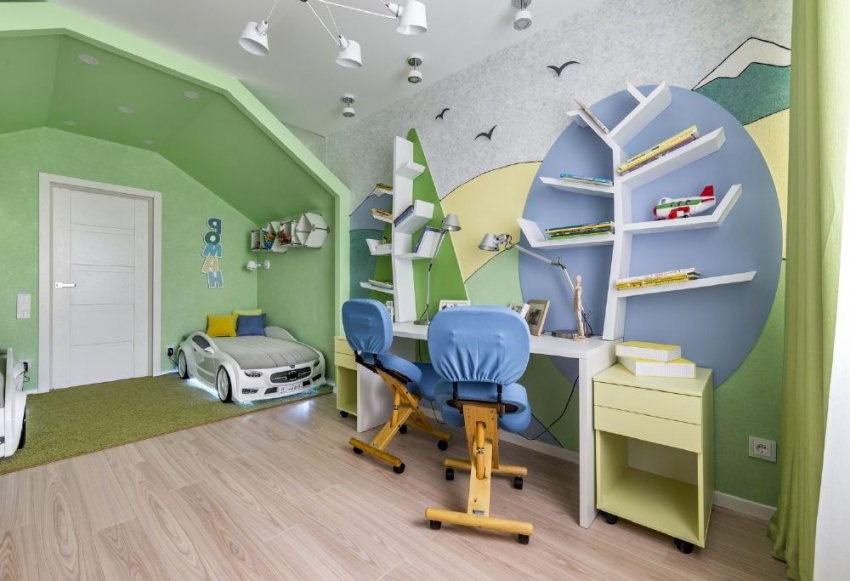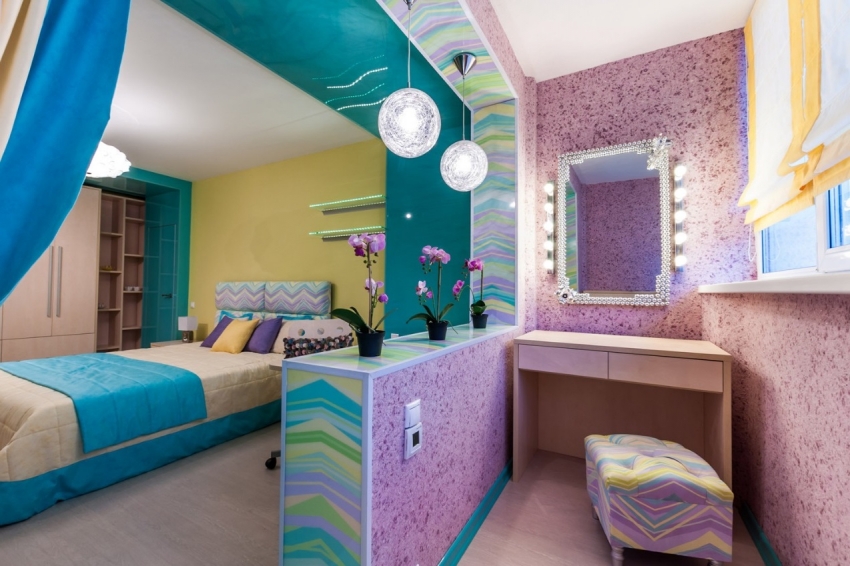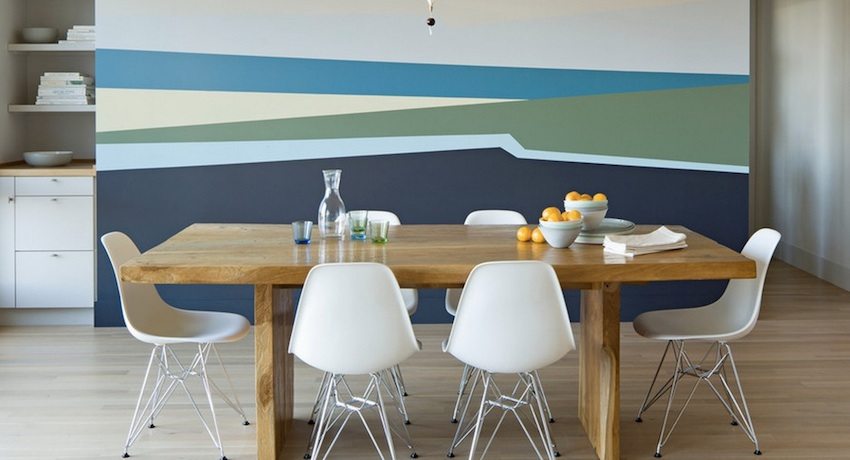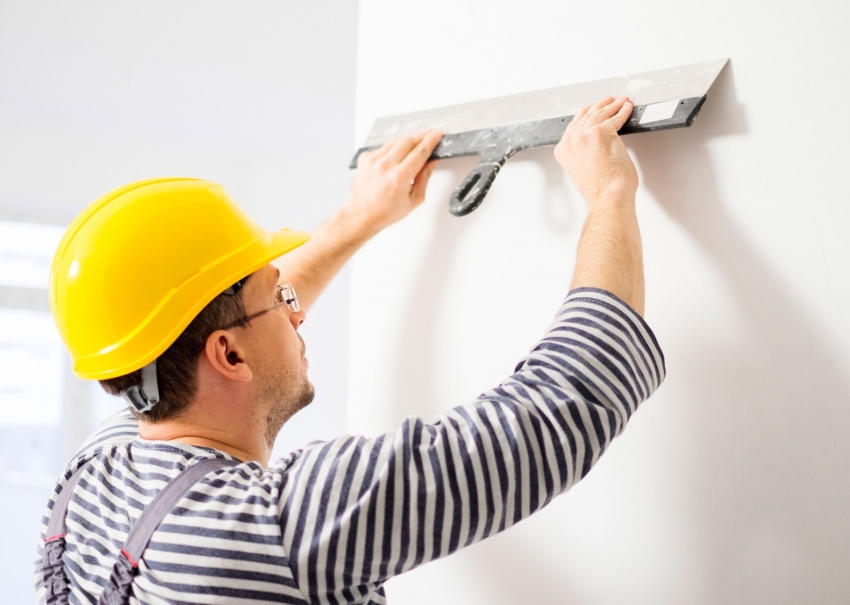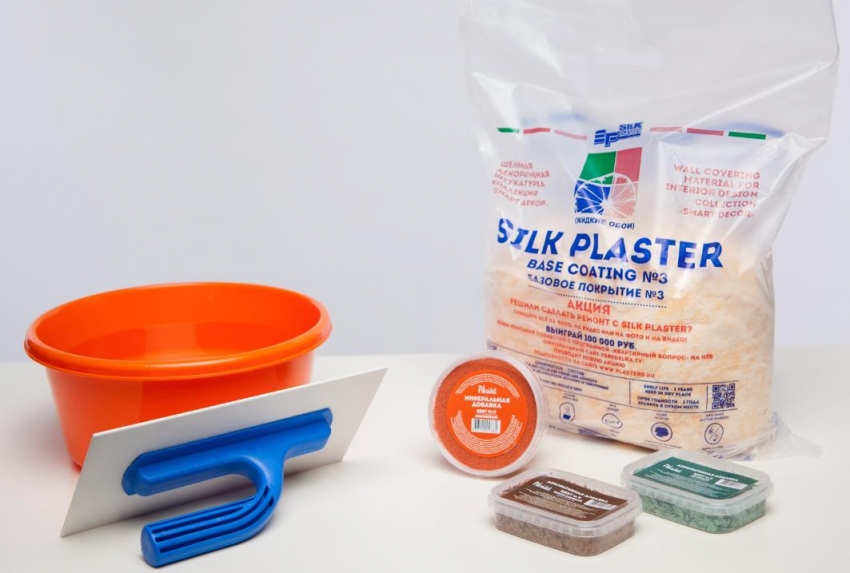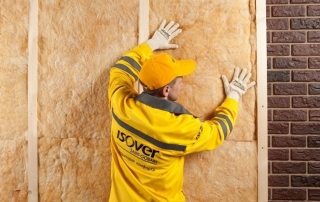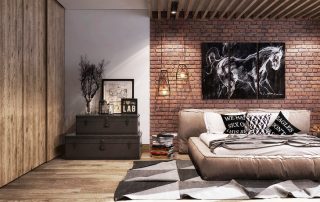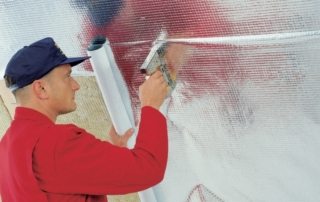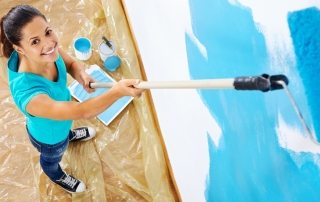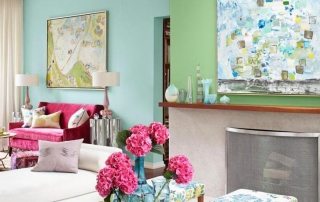From this article you can find out what liquid wallpaper is in practice: reviews, disadvantages and strengths of a finishing material for walls, positive and negative characteristics, as well as properties that must be taken into account when choosing a material and working with it. The text discusses the nuances of coverage that affect the quality of the result.
Content [Hide]
- 1 Advantages and features of using liquid wallpaper: photo in the interior of rooms
- 1.1 Versatility as a beneficial side of the use of liquid wallpaper in the interior: finishing photo
- 1.2 How to properly apply liquid wallpaper: the nuances of technology
- 1.3 The advantages of using liquid wallpaper on the ceiling: photos and reviews
- 1.4 Environmental friendliness and a variety of colors of liquid wallpaper
- 1.5 Stencils for the formation of drawings with liquid wallpaper on the wall: photo of finishing in the interior
- 2 Liquid wallpaper: reviews, disadvantages of finishing material
- 3 How to apply liquid wallpaper: video and recommendations for working with the material
- 4 How to glue liquid wallpaper: video review of technology
Advantages and features of using liquid wallpaper: photo in the interior of rooms
When planning home renovations, you should not limit your choice to the framework of standard materials. If you want to get an interesting and unusual interior design, it is better to pay attention to radical and creative types of finishes. Most modern people do just that. It is for this reason that many apartment owners are interested in how to glue liquid wallpaper on the wall, there are enough video materials on this topic on the network, but the issue of the disadvantages and advantages of finishing has not yet been fully disclosed.
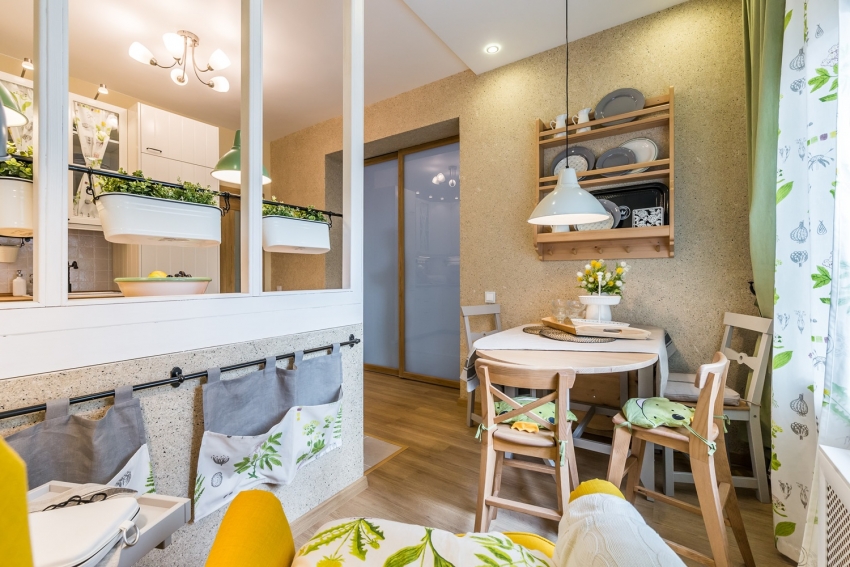
Due to its high performance, liquid wallpaper can be used in the kitchen, but only if there is good ventilation.
Versatility as a beneficial side of the use of liquid wallpaper in the interior: finishing photo
Wallpaper is a universal type of decoration, the scope of which extends not only to living rooms, but also to office and administrative premises. But in practice, many apartment owners face difficulties when working with this material, due to various reasons.
Not every type of surface is suitable for gluing ordinary canvases, so visual videos of applying liquid wallpaper to walls are so popular among Internet users. In addition, operating conditions such as temperature extremes and high humidity levels have a negative impact on standard finishes.
The technology of applying liquid wallpaper manifests itself in an advantageous way in practice when you need to finish:
- bay window;
- arches;
- columns;
- fireplace duct;
- protrusions and niches.
Canvases of ordinary wallpaper are inconvenient to use in the areas listed above, which cannot be said about applying liquid wallpaper with your own hands, video reviews with a detailed description of the technology are easy to find. This type of finish is versatile, although given the palette and design, it is best used in a nursery or bedroom.
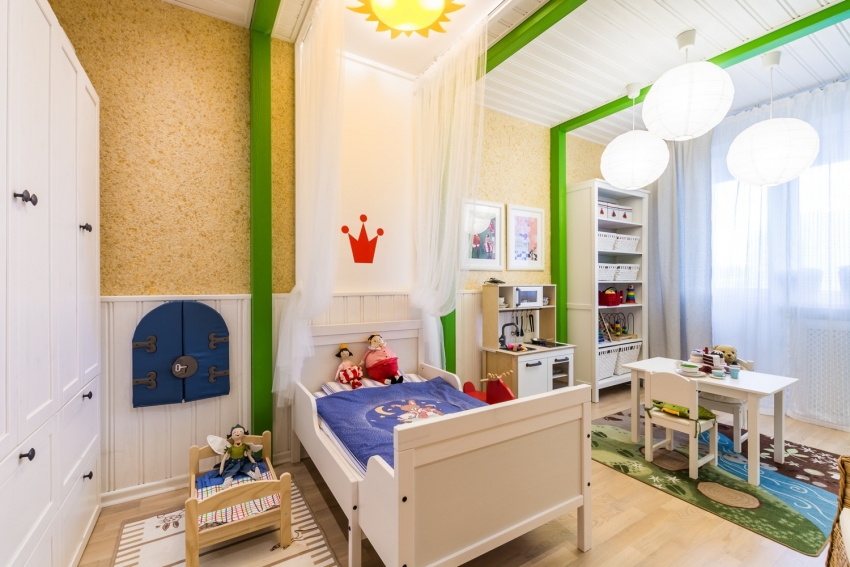
Due to the fact that textured liquid wallpaper is pleasant and soft to the touch, and also perfectly conserves heat, such a finish is often used to decorate children's rooms.
Useful advice! One of the benefits of liquid wallpaper is to improve indoor acoustics and provide a high level of sound insulation. Therefore, you can get the most out of this type of finish to decorate your living room with home theater.
You can often find on the network a photo of liquid wallpaper in the kitchen, because the coating is highly resistant to moisture, which is a significant advantage for rooms with similar operating conditions.
How to properly apply liquid wallpaper: the nuances of technology
The process of decorating walls with ordinary canvases should be performed by two, while one person can also glue liquid wallpaper. There is no need to fiddle with rolls and find free space for them. In addition, there is no chance of staining the coating, because, unlike conventional canvases, the liquid material does not come into contact with the floor and does not need to be cut.

To apply liquid wallpaper, you do not need to have special skills, so even a beginner can easily cope with such a finish.
The installation system is very simple and affordable. Any beginner can easily figure out how to apply liquid wallpaper with his own hands, video reviews of technologies, of which there are many on the Internet, can be successfully used as a visual aid for work.
Not only the application technology, but also the preparatory stage of work is accompanied by advantages that ordinary wallpaper cannot provide. It is enough just to dilute the dry mixture with water and apply it with a thin layer on the wall with a spatula. Moreover, the mixing process is carried out manually, so the question of how to make liquid wallpaper yourself is not difficult.
The advantages of using liquid wallpaper on the ceiling: photos and reviews
When using roll materials, it is impossible to achieve a complete coating, because even the highest quality result is not complete without seams. Photos of liquid wallpaper on ceilings, as well as on walls, show that this type of finish allows you to get a beautiful and smooth surface without gaps and visible joints.
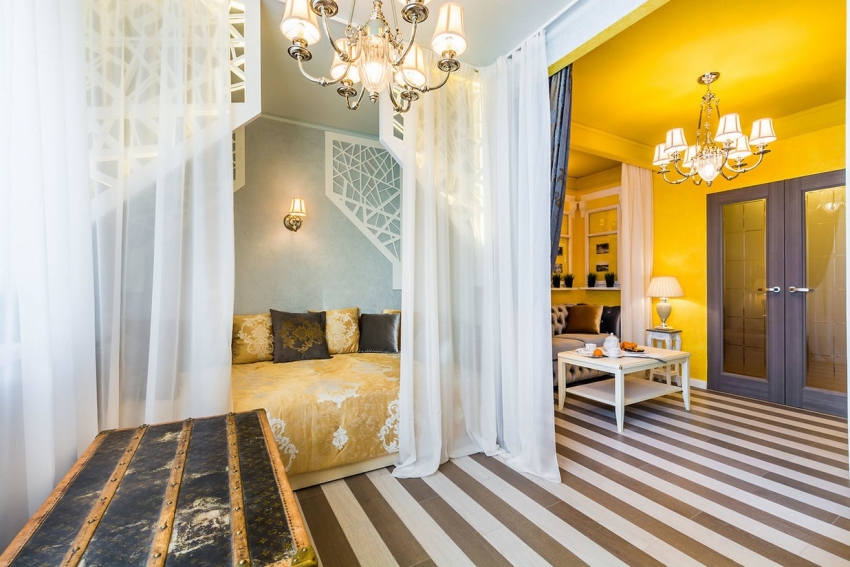
Due to its many advantages, liquid wallpaper is often used for interior decoration by modern designers.
Feedback from buyers from the forums also confirms this advantage:
“Last year I finished the living room with Silk Plaster liquid wallpaper. Most of this type of material is not intended to be applied to a defective surface. I was advised this option in the store, and I was pleased with the result. But I want to warn you that you should not use the material on surfaces with strong drops, if you do not want to get different color depths after drying. "
Maria Volonova, Saratov
“We were pleasantly surprised by the palette in the Silk Plaster liquid wallpaper catalog, as well as the absence of seams and transitions. This coating can be safely used for ceilings. In corner areas, you need to work carefully at the joints between the walls, although in general these places look much more accurate than the seams that form between the rolls. "
Evgeny Samoilov, Moscow
Note! Liquid wallpaper resembles a putty, so it can be used to eliminate minor surface defects, but not more than 3 mm.
Environmental friendliness and a variety of colors of liquid wallpaper
The decoration in the form of liquid wallpaper consists of natural fibers: cellulose, silk, cotton. An adhesive composition (CMC) acts as a binder. Also, a water-based dye is added to the mixture. The result is a coating with a high vapor permeability. In other words, the surface of walls and ceilings under liquid wallpaper "breathes".
Environmental friendliness and vapor permeability of liquid wallpaper excludes the appearance of:
- musty air;
- mold;
- greenhouse effect.
Natural air circulation keeps the humidity level within the optimal range for human health.
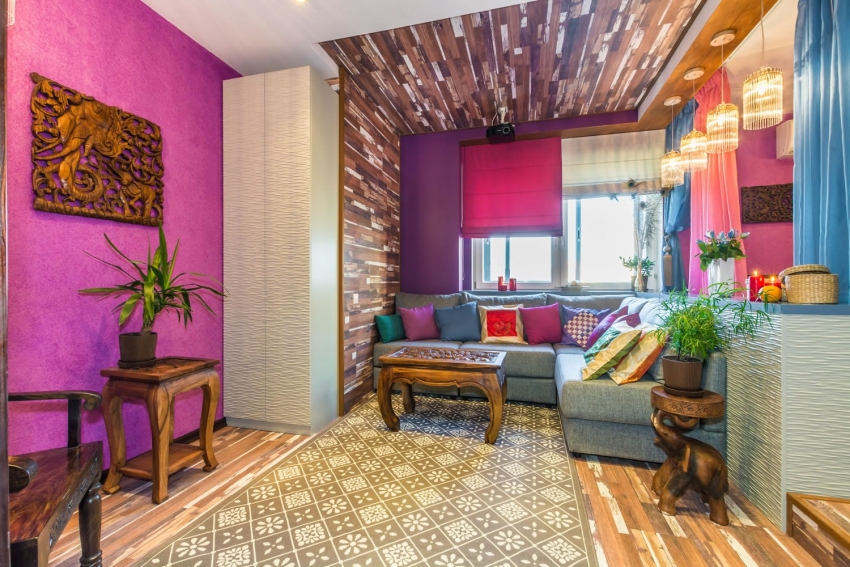
With the help of a basic mixture of liquid wallpaper and several colors, you can decorate the interior in different colors
In fact, the standard color palette of materials is not as wide as we would like. The desired shade can be achieved by adding pigment to the composition. What color scheme for liquid wallpaper is better to choose will be advised by the consultants of a hardware store. Organic pigment pastes are more environmentally friendly and offer a wide range of colors, but they fade and fade quite quickly. Colors of synthetic origin are UV resistant. Moreover, they do not have a large assortment of shades.
There are several ways to make your own liquid wallpaper with interesting effects. For this, special additives are used:
- mica luster;
- marble chips;
- colored flock;
- quartz chips.
These elements allow you to create a coating with an unusual structure and color scheme.
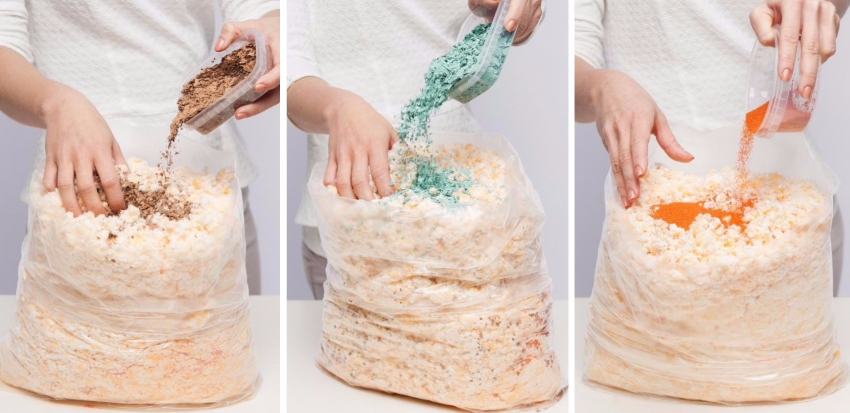
One of the features of liquid wallpaper is the ability to vary fillers, color and texture of the finish
Stencils for the formation of drawings with liquid wallpaper on the wall: photo of finishing in the interior
Liquid wallpaper is versatile not only in terms of application technology. They allow you to support any direction of design or stylistic solutions in the interior. The material can be used to express personal preferences and your own personality. Decorating walls with drawings from liquid wallpaper in the photo looks especially attractive in the interior of a bedroom, living room and children's room.
Useful advice! The easiest way to apply the pattern is with a stencil. Templates for work can be made by yourself or you can buy finished products in a specialized store.
A decor based on drawings with liquid wallpaper on the wall is created using the following types of stencils:
- volume;
- stencil for a single color coating;
- multicolor;
- anti-stencil.

With the help of anti-stencil and liquid wallpaper, you can creatively decorate the interior of a children's room
To decorate the bedroom with liquid wallpaper, you can add thin threads of gold or silver colors to the drawing. The result is a sophisticated and refined finish. In the living room, experts recommend using a material consisting of natural silk. Thanks to this, it will be possible to reliably imitate the fabric of textile wallpaper.
An excellent option for decorating a children's room would be to create a drawing with a thematic plot, for example, seascapes with ships (for boys) or flower arrangements (for girls).
Related article:
DIY liquid wallpaper. Making a working solution: video
Making a mixture from scrap materials. Main characteristics and advantages of liquid wallpaper. DIY liquid wallpaper: video.
Liquid wallpaper: reviews, disadvantages of finishing material
Despite its many advantages, liquid wallpaper also has disadvantages. It is believed that the resulting coating has moisture resistant properties. However, this indicator is not high enough, so liquid wallpaper cannot be compared with washable fabrics.Experts, like manufacturers, do not recommend wet cleaning such a finish.
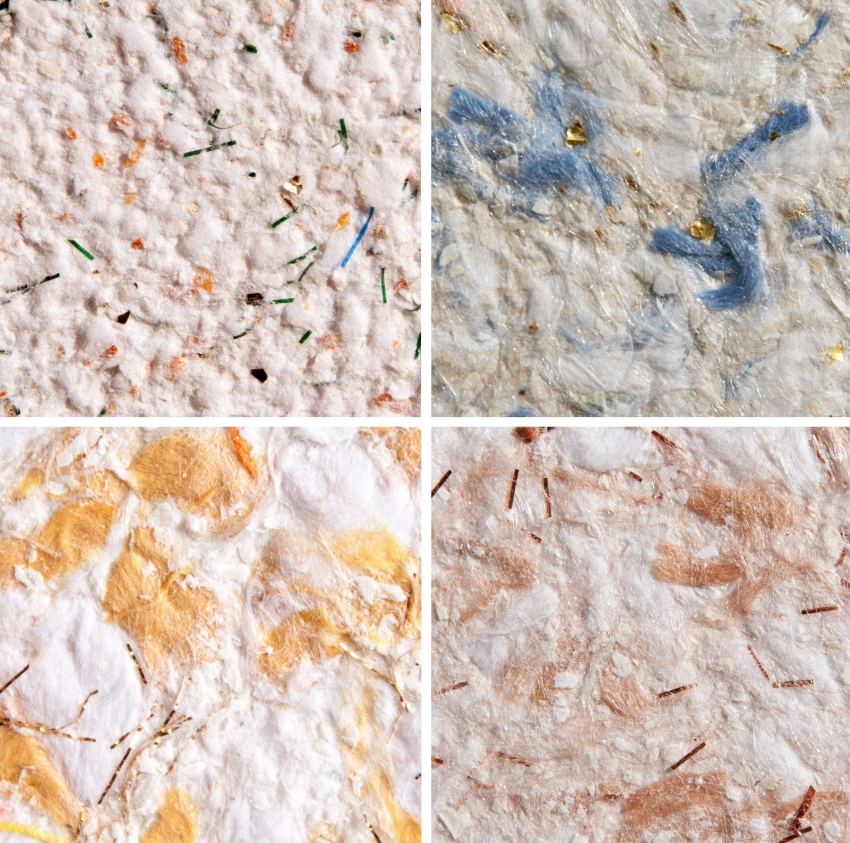
Liquid wallpaper can have various structures and fillers, which allows you to choose the most suitable option for decorating a room
If dirt gets on the wall, the problem is solved as follows:
- The damaged area is moistened with water from a spray bottle and removed. You can use a spatula or knife for this.
- The surface in the repair area is treated with two coats of primer.
- The coating is restored by applying fresh material.
Consumers also note some material shortcomings in their reviews:
“I chose liquid wallpaper for wall decoration in the apartment. The motivation was the environmental friendliness of the material, which, in fact, is a natural fiber dyed in a certain color and mixed with glue. In fact, it turned out that the coating smells very harsh and strong. Moreover, the smell lasts for a very long time, as does the feeling of dampness in the room. I had to open the windows, but that didn't help much either. "
Vitaly Golub, St. Petersburg
“Finally we finished renovating our house. We used liquid wallpaper on the recommendation of the seller in the store. Now I want to share my impressions. Firstly, the procedure for applying the material is not as simple as the manufacturer claims. Secondly, before diluting the material with water, you need to carefully check the condition of the walls and plaster on it. The fact is that at least 10-20 kg of finishing is applied to the wall. Not every plaster can support this weight. The coating itself turned out to be quite attractive, although, in my opinion, not as cozy as ordinary wallpaper. "
Sergey Vasnetsov, Moscow
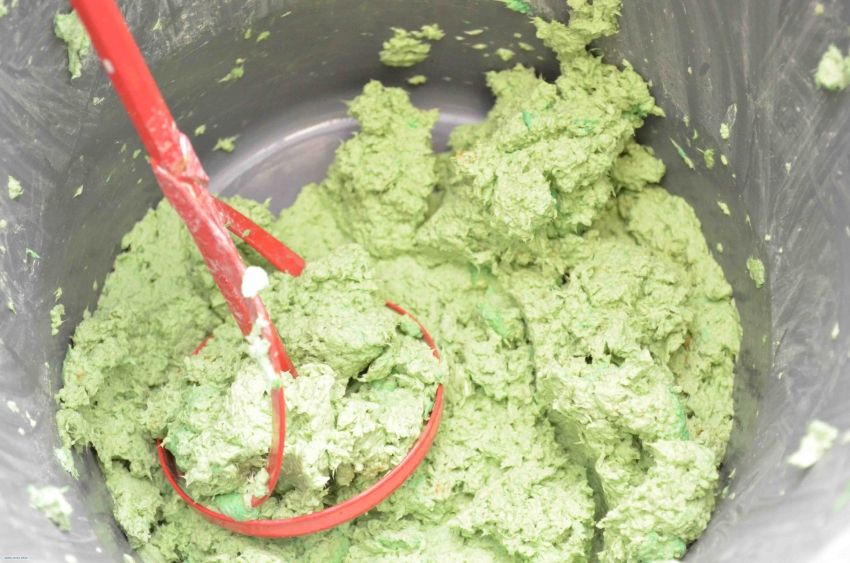
In the case of preparing liquid wallpaper for application on a large surface, it is better to use a construction mixer to knead the composition
Useful advice! If the design involves combining several types of liquid material, before working on the walls, you need to apply markings that will serve as a reference point between different areas.
How much does liquid wallpaper cost: price is the main drawback of the material
Despite the fact that many buyers find attractive the photos of liquid wallpaper found in catalogs, the price of the material does not suit everyone. Compared to traditional finishes, the cost of this coating is quite high. Having no experience with liquid material, you will also have to purchase several additional packages in order to properly master the technology.
Features and average prices of liquid wallpaper for walls:
| Manufacturer | Material advantages | Textured features | Manufacturer country | Consumption 1 pack. / M² | price, rub. / pack. |
| Silk Plaster | masking irregularities | Smooth, embossed | Russia | 3-4 | 920 |
| large selection of decorative additives | |||||
| UV resistance | |||||
| wide palette of shades | |||||
| Leroy Merlin | elastic cover | Smooth, embossed | France | 4,5 | 970 |
| lack of gaps and seams | |||||
| fast and easy application system | |||||
| Bioplast | surface repels dust | Embossed | Ukraine | 3,5 | 1050 |
| does not interfere with natural air circulation | |||||
| good maintainability | |||||
| high level of sound and thermal insulation |
Features of the preparation of walls for liquid wallpaper and their application
The preparatory stage is the most important component of finishing work, because the final result depends on the quality of the base. The process of preparing the solution does not cause any particular difficulties, but it takes a long time. To do this, it is enough just to pour cellulose material into the container and, adding water, mix thoroughly to obtain a homogeneous mass. The procedure is done manually. After the material is mixed, it is placed back in the packaging or plastic bag, where it is left until maturation.
Preparation of the base is a difficult stage of finishing work, which involves:
- sealing defects (chips, cracks);
- plane alignment;
- lightening the surface with a white dye.
It will be necessary to apply a primer under liquid wallpaper, as well as on each applied layer of material. This process takes a long time. This will take several days, because each layer needs to be thoroughly dried before further work can be started. It is worth considering that the putty dries on average 24-30 hours, and the primer 24 hours.
Note! Each pack of liquid wallpaper is kneaded separately. It is not advisable to pour several bags of dry material into one container at once. In the case of adding color, you should carefully monitor the ratio of the coloring composition, as well as other decorative components and the amount of wallpaper.
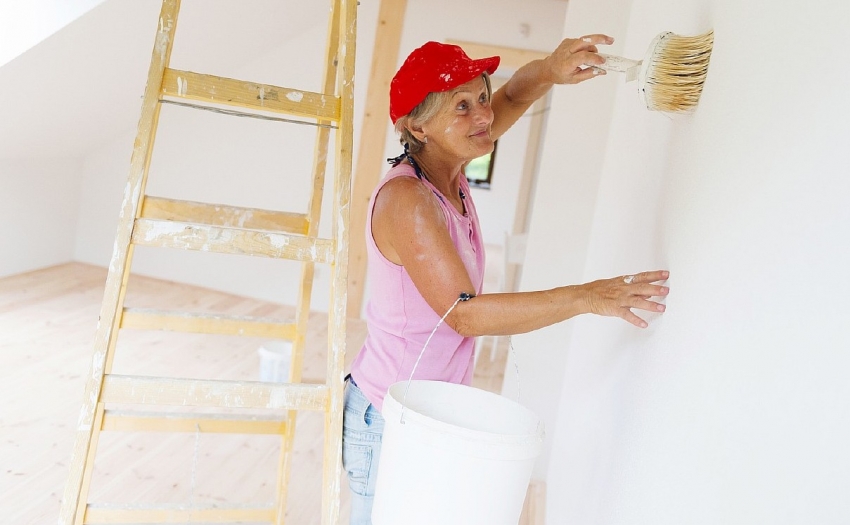
In order to extend the operational life of liquid wallpaper, the surface must be primed before applying it.
How much liquid wallpaper dries depends not only on the manufacturer, but also on other conditions:
- temperature and humidity conditions;
- quality of foundation preparation;
- base material;
- the composition of the mixture (the presence of polymer, mineral or metallized fillers);
- the presence of drafts.
The drying process of the wallpaper can take from 2 days to 3 weeks. The duration also depends on the base material. Liquid wallpaper dries most quickly if gypsum plasterboards, sand-lime plaster (layer thickness - 1-2 cm) or silicate brick are chosen as the base.
How to apply liquid wallpaper: video and recommendations for working with the material
Liquid wallpaper is applied to the wall surface in a thin layer, as a result of which the base is leveled, minor defects are eliminated, and the presence of seams is eliminated. Thanks to this, an ideal base for finishing is obtained, so many apartment owners are wondering whether it is possible to glue wallpaper onto liquid wallpaper.

Using a stencil and liquid wallpaper, you can create interesting drawings and inscriptions on a prepared and painted wall
This procedure is possible, but under certain conditions:
- no damage to the layer of liquid wallpaper;
- no bubbles under the surface of the finishing material;
- absence of delamination, dirt and other defects.
If the finish surface does not meet the listed requirements, you should carry out a partial repair of liquid wallpaper in problem areas or completely remove the coating.
How to remove liquid wallpaper from the wall:
- by soaking from a spray bottle and removing with a spatula;
- using an industrial hair dryer;
- using a straight grinder;
- using a grinder;
- by applying a special wallpaper remover.
If you cannot completely get rid of liquid wallpaper, you can mask it. In this case, strongly protruding areas are carefully sanded on a relief coating, and a roughness is created on a smooth surface in order to improve adhesion.
How to find out the consumption of liquid wallpaper per 1 square meter
According to the consumption of liquid wallpaper per 1 sq. m you can determine how economical the material is and how much finishing work will cost. Comparing the result obtained with the price of dry mix in the store, you can determine the feasibility of such a purchase. In most cases, the manufacturer indicates in the instructions how much material is required to process 1 m². As a rule, one package (1 kg of mix) is enough to finish 5 m² of the surface. However, these figures are only approximate.
When calculating the consumption of liquid wallpaper, it is worth considering the following factors:
- To prepare the solution, 6 liters of water are added to the dry mixture, which affects the volume of the material.
- The finish is applied in a thin layer, so a small amount of mortar is required for surface treatment.

The application of liquid wallpaper to the entire wall should be done from one batch, which guarantees uniformity of the texture and color of the coating
Taking into account the characteristics of the material and customer reviews on the forums, liquid wallpapers have more advantages than disadvantages. This statement is true if all technology requirements are followed exactly. In the absence of skills in working with liquid wallpaper, overrun or waste of material is possible. It is better to entrust the work to the hands of professionals, since wrong actions can result in more minuses than pluses.

